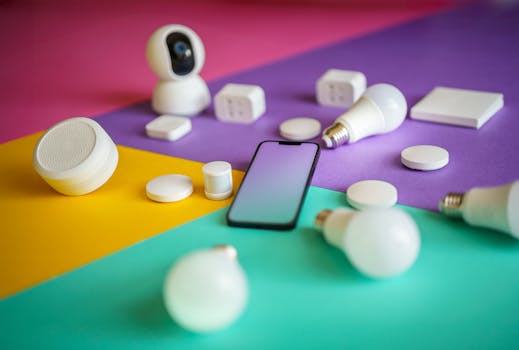
The Rise of Smart Home Devices: 2025 Trends and Innovations
Takeaways: The smart home device market is set for explosive growth in 2025, with advancements in AI, integration, and sustainability. Key trends include enhanced security features, voice control capabilities, and energy-efficient technologies, all aimed at making our homes smarter, safer, and more efficient.
The smart home revolution has transformed the way we interact with our living spaces, and as we approach 2025, the trends and innovations in this field continue to evolve at a remarkable pace. Smart home devices are not just conveniences; they are becoming essential components of modern living. This article will explore the latest trends, innovations, and the future landscape of smart home technology.
The Evolution of Smart Home Devices
The journey of smart home devices began with simple automation, such as programmable thermostats and smart lighting. However, the technological advancements of recent years have paved the way for a new wave of innovation. In 2025, we anticipate a significant shift in how these devices operate, driven by artificial intelligence (AI) and the Internet of Things (IoT).
AI integration will enable smart home devices to learn from user behavior, allowing them to adapt and respond intelligently to our needs. For instance, smart thermostats will not only adjust temperatures based on our schedules but will also anticipate our preferences over time, optimizing comfort and energy usage. This level of personalization enhances the user experience and encourages greater adoption of smart home technologies.
Moreover, the interoperability of devices will be crucial in 2025. Consumers are increasingly looking for seamless integration between different brands and platforms. The ability to control various devices from a single app or via voice commands will become standard, making smart home management more user-friendly. As companies invest in developing open ecosystems, the average household will likely feature a mix of devices from different manufacturers, all working together harmoniously.
Key Trends in Smart Home Technology for 2025
As we look ahead, several key trends are shaping the smart home landscape for 2025:
1. Enhanced Security Features
Home security remains a top priority for homeowners, and smart devices are at the forefront of this movement. In 2025, we can expect advanced security features, such as facial recognition cameras, smart locks with biometric access, and AI-driven monitoring systems that can detect unusual activity and alert homeowners in real time.
Furthermore, the rise of privacy-focused technologies will become essential as consumers become more aware of data security. Companies will need to ensure that their devices not only provide security but also protect user data, offering transparent privacy policies and robust data encryption.
2. Voice Control and Virtual Assistants
Voice control technology has revolutionized how we interact with our devices. By 2025, we expect to see even more sophisticated virtual assistants capable of understanding context and nuance in spoken language. This will lead to more natural and intuitive interactions with smart home devices.
Imagine a home where you can simply ask your virtual assistant to set the mood for movie night, adjusting the lighting, temperature, and even preheating the oven for snacks—all with a single voice command. This level of automation will enhance convenience and elevate the smart home experience.
3. Energy Efficiency and Sustainability
With growing concerns about climate change and energy consumption, smart home devices are becoming more focused on sustainability. In 2025, energy-efficient appliances and systems will likely dominate the market. Smart thermostats, energy monitoring systems, and intelligent lighting solutions will help homeowners reduce their carbon footprint.
Additionally, innovations in solar power integration and energy storage will allow homeowners to harness renewable energy more effectively. Devices that communicate with each other to optimize energy usage based on real-time data will become commonplace, making homes not only smarter but also greener.
Conclusion
As we move toward 2025, the rise of smart home devices will continue to shape our lives in profound ways. With advancements in AI, security, voice control, and sustainability, our homes will become more intelligent, efficient, and secure. The future of home automation is bright, and the innovations we will see in the coming years promise to transform our daily lives.



